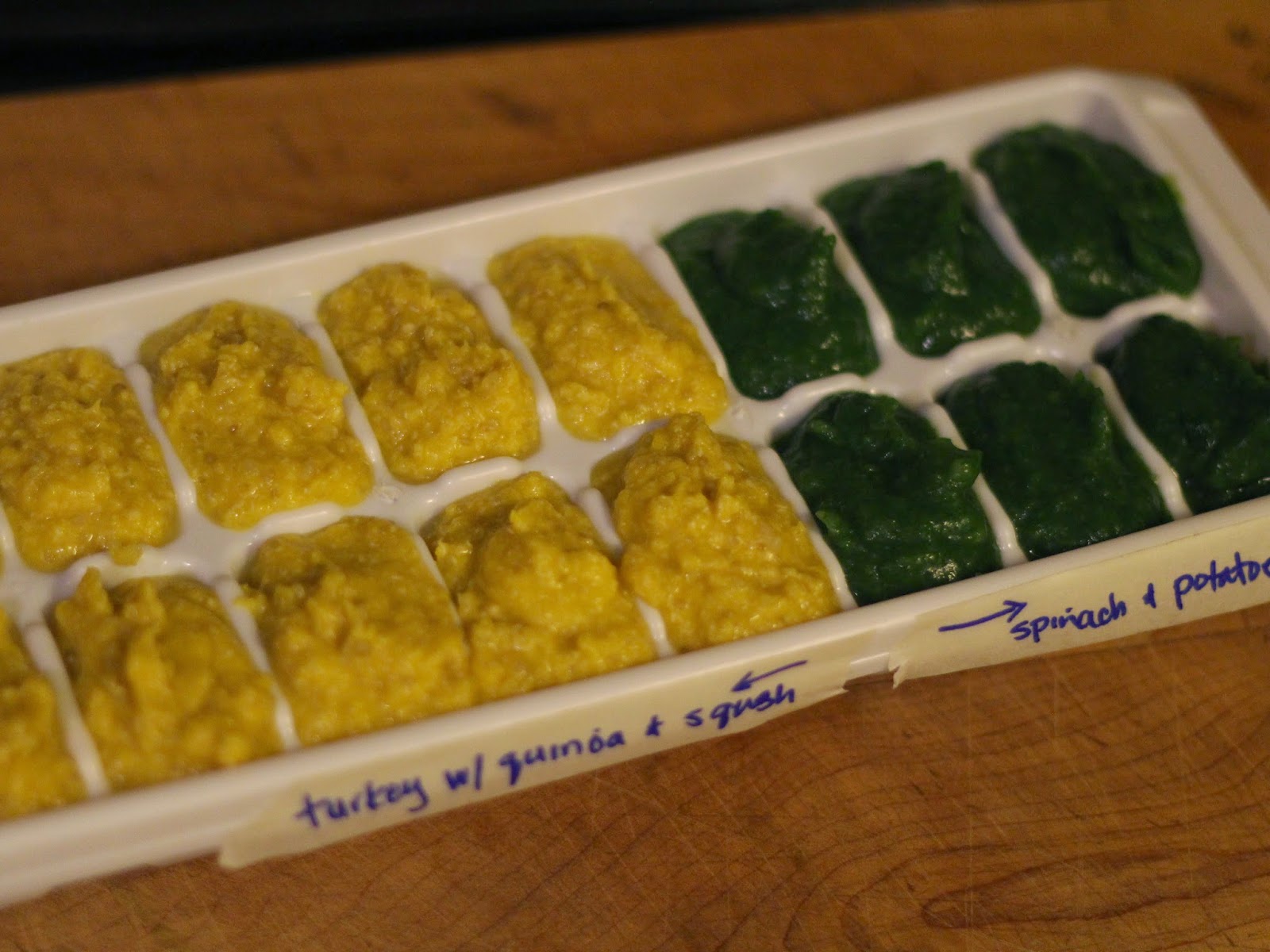It turns out I REALLY like making food for the tiny human.
There is something so exciting about developing food combinations for this
person whose world is just now being opened to the joy that is food.
My husband and I both love food, and in fact connect over food
regularly. We cook for each other and occasionally together; we love eating out
and finding the best local versions of our favorite meals. And so of course we were looking forward to introducing Charlie to the foods we love—perhaps too much.
His first taste of food
was mostly a disaster; it did not live up to my romantic ideal—one that we were celebrating. (There were a few friends over, and a half birthday hat
involved).
We waited until Charlie was six months to give him solid
food (this was our choice based on plenty of research and conversations with
our doctor) and we wanted to start with a vegetable rather than something sweet.
Again, there is intention here. Certainly every child is different (as are their parents). I’m not sure it will work, but if there is a
chance, we’d like to raise an adventurous and mature eater, so we’re resisting adding fruit or
sweet food to the majority of Charlie’s meals. His sweet tooth will have plenty
of time to develop later.
Charlie turned six months old in November, so I though pumpkin would
be the perfect fall food. I roasted and purée a sugar pumpkin my father grew
in his garden (again, ideal) and was excited to feed him. He did NOT love it—or really any solid food for
over a month.
I didn’t do the best job feeding him that first taste. I
should have thinned the pumpkin so that is was more liquid than purée, and we
should not have tried to put this brand new taste and texture anywhere near his
mouth when he was tired. Whoops.
He made faces.
He gagged.
He cried.
It was
pretty funny, really, but I was disappointed. Of course he didn’t like the
pumpkin—the entire concept of food was foreign to him and he had no idea what
to do. Now I understand that.
While I can, I’m trying to make as much of Charlie’s food as possible. I like the idea of knowing exactly what he’s
eating, and I just plain enjoy the creative process. We started with simple,
single fruit and vegetable purées, and now that he has had several single foods (we're paying close attention to the foods he’s eating and looking for any sign of reaction),
he’s ready for meals.
A few weeks ago I had a marathon food
making session; Charlie complied by playing in a laundry basket on the kitchen floor for a good part of the food frenzy.
I bought eight ingredients to cook, combine, blend, portion,
and freeze.
My raw materials: spinach, potatoes, sweet potatoes, squash,
pears, lentils, quinoa, and ground turkey.
My process:
I roasted squash in the oven.
I steamed spinach and pears.
I boiled both types of potato.
I cooked quinoa and lentils.
I browned turkey.
And used all of the pots and pans we own.
Prepping quickly,
cooking in two batches (we only have four burners on the stove), and washing
dishes as I worked, it took about three and a half hours—not bad for food that will last several
months. When cooking the food, I try to use as little water as possible for steaming and boiling, and I use the cooking liquid in the purées to maintain as many nutrients as possible.
Once the ingredients were prepped and cooked, I portioned them
into jars to blend with an immersion blender. Twenty-four ounce Ball jars
worked perfectly—they’re big enough to hold a good amount of food and the
blender fits all the way to the bottom of the jar.
The immersion blender is
fast, makes a fine purée, and the best part: it cleans quickly and easily
between batches.
After blending I portioned the food into ice cube trays and
labeled them (keeping track of the batches is simple, but important—Post-It
labels on the jars and masking tape on the trays worked like a charm). Once the trays were frozen, I
just popped the cubes into labeled freezer bags. A shelf in our
basement freezer is now dedicated to baby food ice cubes.
The child now loves food. For the last month he’s
delighted in eating everything we give him--so much that he often says "mmmm" when taking a bite. I’m not sure how that happened
really, but we were persistent and didn’t force him. For over a month he gagged
and made faces with almost every bite we offered. Baby oatmeal and prunes he
accepted after about a week, but everything else he refused (all of those first purées I made) and we offered
every day. Eventually he ate one or two bites of his carrots, then pumpkin, and
then he suddenly changed his mind about food in general and loved green beans,
beets, sweet potatoes, and peas. He even sucked on a pickle without making a
face. Somehow, our kid has turned into an eater, despite those first bites.
I made eleven purées that day:
Pears.
Pears with ginger.
Pears and sweet potato with cinnamon.
Lentils and squash.
Quinoa and squash.
Spinach and potatoes with cumin.
Spinach, potatoes, and turkey.
Turkey, quinoa, and squash.
Turkey, spinach, and quinoa with garlic.
Turkey, quinoa, and lentils with garlic.
Turkey, squash, and lentils.


























